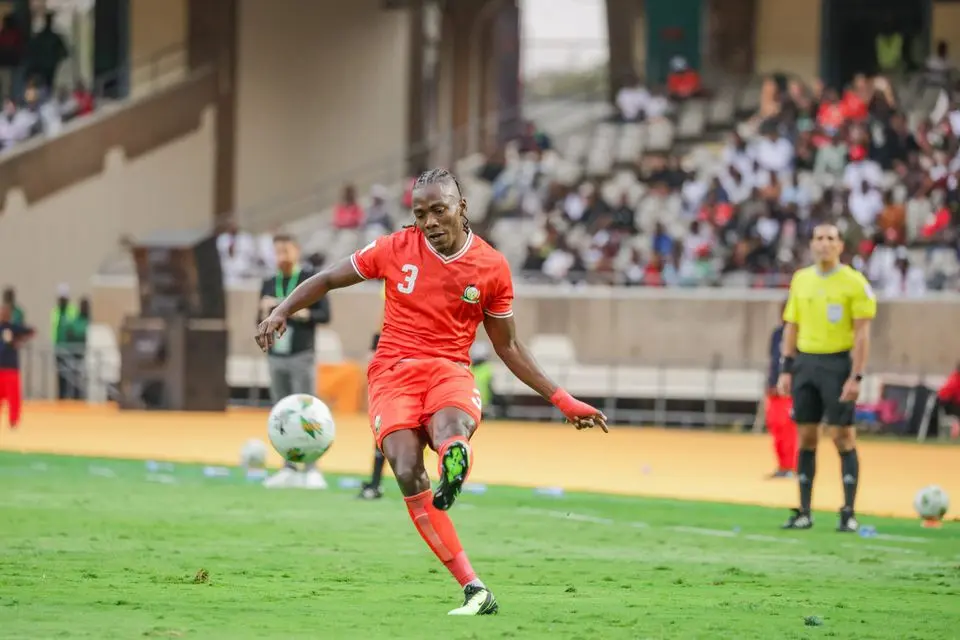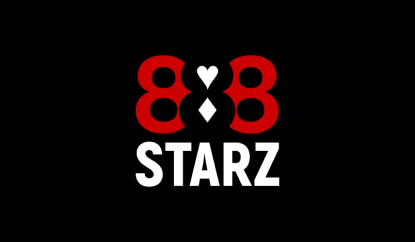This is our Kenya vs Gambia World Cup qualifier tactical analysis, a close look at how the Scorpions raced clear in Nairobi and how Harambee Stars tried to wrest momentum back with substitutions, spirit, and smarter spacing in the second half.
How the first 15 minutes shaped the mood
Kenya began with intent at the Moi International Sports Centre, Kasarani. Early thrusts from William Lenkupae and Rooney Onyango stirred the crowd and hinted at front-foot ambition, the kind of wing energy that can tilt a qualifier quickly.
Then came the sting. Sheriff Sinyan rose to meet a Yankuba Minteh corner and Gambia had the lead, a set-piece blow that cut through the early optimism. From that moment the Scorpions played with a clarity that Kenya struggled to disrupt, and the first half turned into a lesson in punishing errors.
Transition moments and the Minteh factor
The contest pivoted on transitions, where a single misstep can become a sprint to disaster. A Kenyan turnover invited a ruthless counter and Minteh doubled the advantage, his acceleration exposing the space behind the defensive line and tilting the pitch in Gambian colors.
Moments later, another defensive slip opened the route for Musa Barrow, with Minteh again central to the move. For Harambee Stars left back Abud Omar, a standout at CHAN 2024, this was a bruising afternoon on a wider stage against the Brighton winger, a direct duel that demanded perfect timing and recovery angles.
“We are disappointed at the end of the day. It is not like the other team was better than us, we were punished by our own mistakes. We just need to go back, fix those mistakes, and come on Tuesday ready to do our best again.”
Omar’s assessment cut to the heart of it. At international level there is little margin for error. A poor touch, a loose pass, a missed rotation, and the punishment is immediate. As Omar noted, the leap from CHAN to full internationals is steep, and against a winger of Minteh’s profile that reality was unforgiving.
What changed after halftime
With a three-goal deficit threatening to bury the occasion, Benni McCarthy went to his bench at the break. Alpha Onyango and Manzur Okwaro came on to inject energy and control, a structural and emotional reset that helped Kenya push higher and connect lines with greater urgency.
The substitutes brought life. Attacks became quicker, the ball moved with more conviction into the channels, and the Kasarani crowd responded. Duke Abuya and Ryan Ogam both found the net only to be denied by offside flags, reminders that the margins had not softened even as momentum shifted.
Then the breakthrough finally arrived. In the 81st minute, Ogam converted, a reward for persistence and a reflection of his own game intelligence. He had watched, waited, and then struck with the picture already painted in his mind.
“Before I scored that goal, I had analysed the defenders when I was on the bench, and I saw that they were leaving a lot of bigger spaces. Going into the match, I knew I was supposed to create that space for myself, and the good delivery helped me a lot.”
Ogam’s explanation revealed a crucial layer, the value of reading patterns from the touchline and then attacking those gaps decisively. His finish did not alter the result, but it crystallized a second-half narrative of improvement and fight.
| CASINO | BONUS | INFO | RATING | |
|---|---|---|---|---|
|
bonus
New players get 50 free spins and a Ksh 2500 freebet!
See 7 Bonuses
|
info
BK 0000665 PG 0000405 Good combination of online casino and betting platform |
|||
|
bonus
Deposit KES 147 for up to KES 14,745 bonus + spins!
See 10 Bonuses
|
info
BK 0000683 Industry-leading software providers, over 30 casino games, BCLB license |
|||
|
bonus
Register for up to 31,400 KSH bonus on deposits!
See 12 Bonuses
|
info
No. ALSI-112310012-F15 Unique selection of slots & games |
|||
|
bonus
Sign up for KES 46 bonus after first deposit!
See 11 Bonuses
|
info
20+ crash & instant games, Aviator bonuses BK 0000704 |
The coaching subplot and familiarity edge
Behind the tactics sat a coaching story with a human thread. Jonathan McKinstry knows Kenyan football intimately from his Gor Mahia tenure, and he acknowledged that familiarity as a factor in planning for this qualifier. That insight, both into individual tendencies and the psychological terrain of Nairobi, offered Gambia an added layer of preparedness.
Fans noticed the theater too, even joking about the head coach’s beard as if it carried its own footballing destiny. Strip away the humor and what remained was a staff that came with a clear plan, then trusted quick wide outlets and maximized the consequences of Kenyan errors. In a qualifier where tempo, transitions, and set-pieces rule the day, that blend of scouting and conviction can be decisive.
Key tactical takeaways
- Set pieces can flip early pressure, Minteh’s corner to Sinyan turned Kenya’s bright start on its head,
- Transition defense defines qualifiers, a single turnover fed Minteh’s pace and swung the match further Gambia’s way,
- Individual duels matter, Omar’s battle with Minteh underlined how one mismatch can ripple through a back line,
- The bench can sharpen structure, Alpha Onyango, Manzur Okwaro, and later Ogam improved energy, ball progression, and penalty-box presence,
- Composure in the final third remains the separator, offside marginal calls and missed windows cost Kenya while Gambia were clinical.
Why the first half proved so costly
Three goals before the interval left a mountain that even a braver, more cohesive second half could not climb. The pattern of the goals told the story, a set piece, a transition strike after a turnover, and a finish created by exploiting a slip in the defensive chain. Each moment reaffirmed the same theme, at this level the punishment comes quickly and repeatedly.
Kenya’s early pressures through Lenkupae and Rooney Onyango hinted at a plan to pull Gambia wide and attack from the channels. Once chasing the game, however, the risk-versus-reward equation tilted, and the Scorpions found the spaces they wanted for Minteh and Barrow. Controlling those moments, either by cleaner rest defense or smarter shot selection, would have kept the match within one goal and sustained the early energy.
Second-half tweaks that worked
McCarthy’s changes brought fresher legs and better balance between risk and security. Alpha Onyango’s presence in midfield steadied possession and helped Kenya build attacks without as many rushed entries. Manzur Okwaro added running power and link play, offering passing angles that cut a few of Gambia’s counter lanes.
Higher line engagement increased ball recoveries in the Gambian half, which in turn fed Abuya and Ogam around the penalty area. The offside calls were frustrating, yet they also indicated improved timing on runs and more purposeful service into the box. A cleaner final ball and stronger coordination on the blind-side runs would have threatened a late equalizer.
Player spotlights that defined the tie
Yankuba Minteh tilted the contest, influence on all three Gambian goals, direct pace, and aggressive first touches. Every time Kenya hesitated, he moved into the space with conviction, either delivering the set piece, finishing the break, or squaring for Barrow to hammer home.
Abud Omar offered the honesty top-level sport demands. He confronted a difficult duel and, in the aftermath, distilled the difference between continental competition and full internationals. That candor matters, because acknowledging the gap is the first step to closing it.
Ryan Ogam showed a striker’s eye for the moment. Observation became anticipation, anticipation became decisive movement, and movement became a finish that gave the home team a late pulse. For a forward stepping up from CHAN success, that sequence felt like a building block for what comes next.
What Kenya must do next
Attention now shifts to Seychelles, and the blueprint is straightforward. Start strongly, avoid the early concession, and keep distances tight between midfield and defense when possession turns over. Protecting the first pass after a loss will limit transition waves and deny opponents the clear sightlines that undid Kenya here.
On set pieces, collective responsibility is key. Clear roles on the first contact, aggressive body positioning, and alertness to second balls can prevent a repeat of the opening goal. With sharper discipline on restarts and improved communication when shifting across to meet pace in wide areas, Harambee Stars can tilt the next match back toward their strengths.
The second half at Kasarani was not a mirage. It was a demonstration that, with the right changes and a steadier heartbeat, Kenya can create chances and sustain pressure. If the first-half errors are cut out and the finishing moments are timed with precision, the next chapter can read much differently.
Bottom line
Gambia won the big moments and the small details across a first half that left little room for recovery. Kenya responded with courage, better structure, and a goal that confirmed the adjustments were working. Carry that version forward, minimize the giveaways, and the campaign can still find its rhythm.










